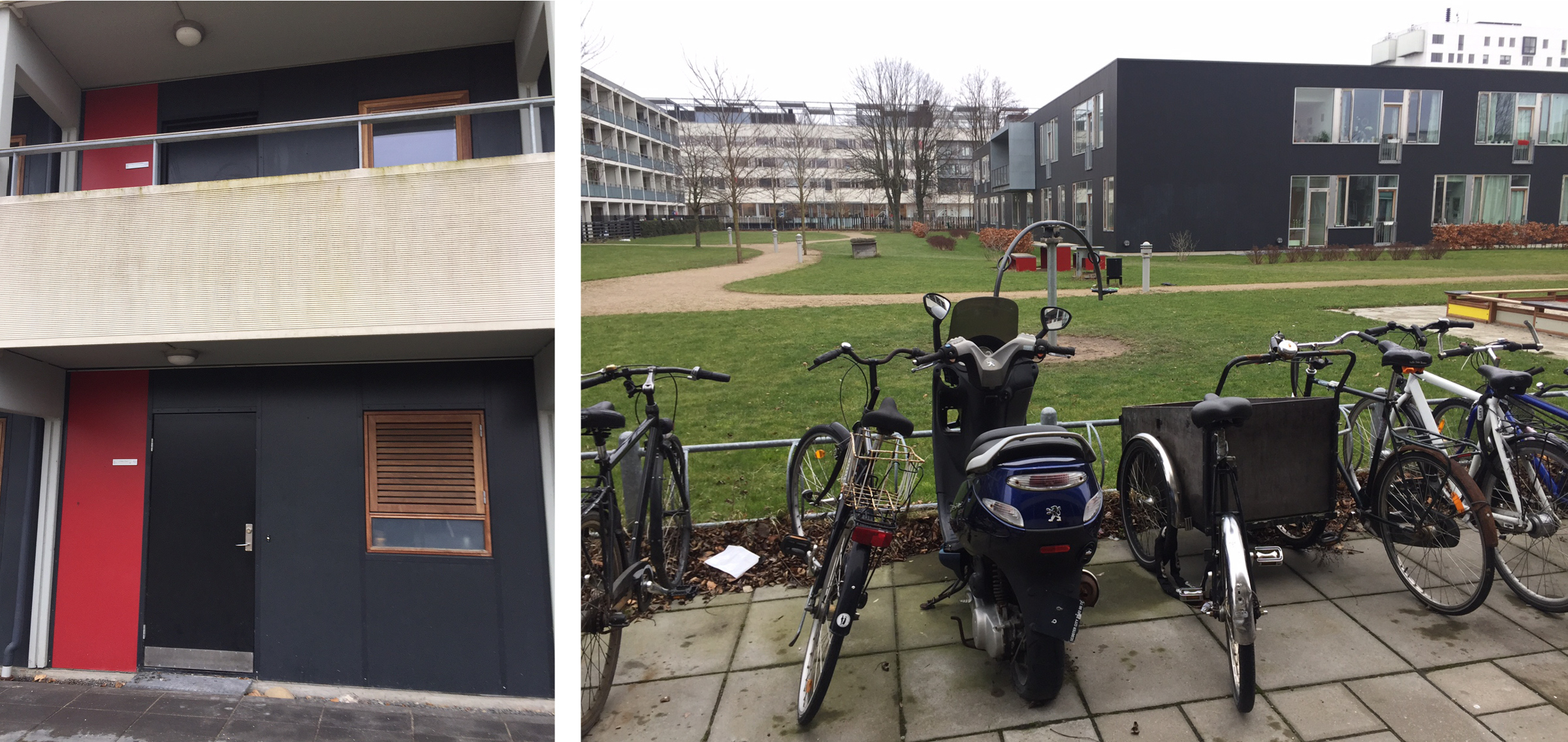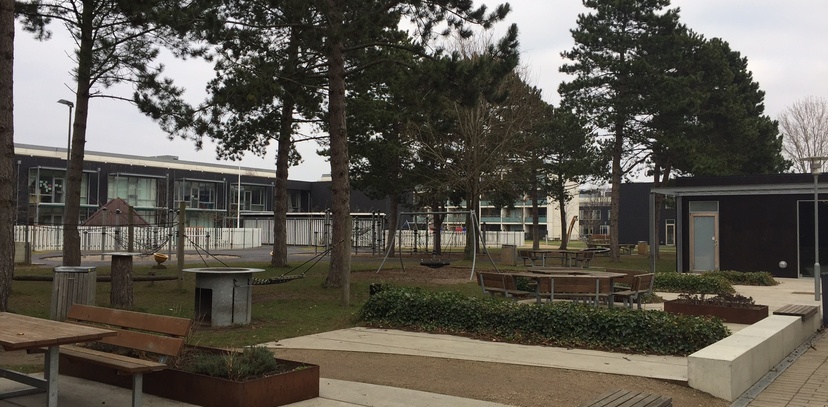
On a windy January day we went to see Gyldenrisparken in Copenhagen, to understand some of the differences between estate regeneration in the UK and Denmark.
In Denmark, social housing, or public housing as it is defined, is run by private non-profit housing organisations with support from local authorities. These are compliant with legislation, defining the terms in which they provide, manage and sustain housing, as well as ensuring resident democracy and involvement. There are strict terms for the renovation of housing estates, and it is almost impossible to demolish any existing housing. The Danish funding model incentivises refurbishment not demolition, very different to the current English financial models for social housing.
The development of new housing, renovation of existing housing, and investment in community programmes are all funded through Landsbyggefonden, a national foundation created by public housing associations to support the self-financing of housing estates. This has created an environment where the renovation of public housing is often extremely innovative and a testing ground for sustainable approaches, both social and environmental. Gyldenrisparken is a good example of this.
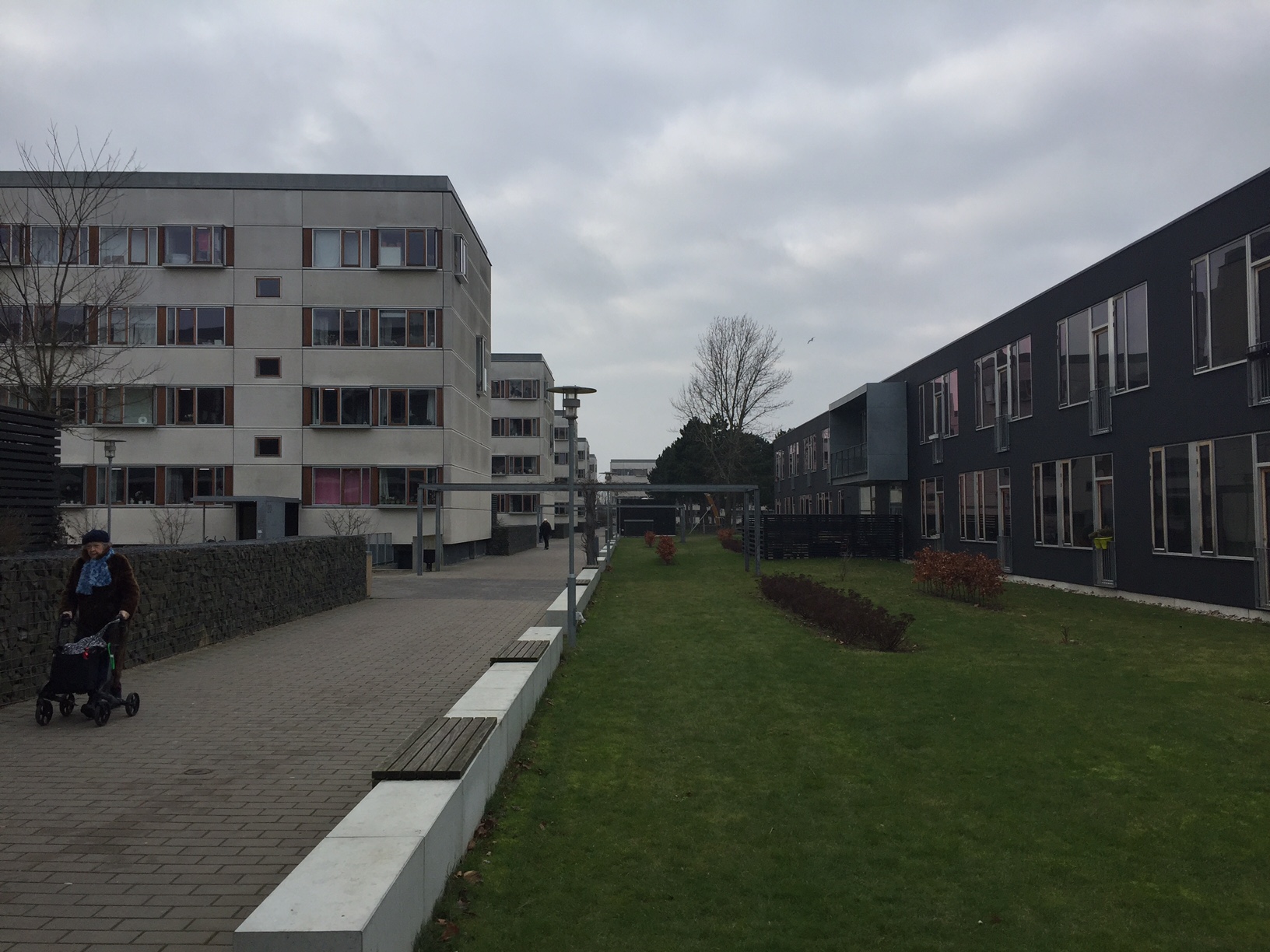
Old and new in Gyldenrisparken, the dark building to the right is the new retirement home
Gyldenrisparken, situated on Amager in Copenhagen, is a classic 60s estate build after modernist ideals with housing blocks surrounding a large open green space. When the area was first built it was home to a thriving community, providing a good alternative to the small inner-city flats. However, wear and tear, changing housing preferences, and increasing social problems led to the landlord, Lejerbo housing assocation, make a decision to renovate the estate between 2010-11.
The area was renovated for about 750m DKKR, over half of this went to renovating buildings, especially focusing on the façade, windows and making the outdoor balconies larger. The renovation honoured the original aesthetic, updating the straight modernist lines to a more contemporary look with new wooden windows and concrete cladding.
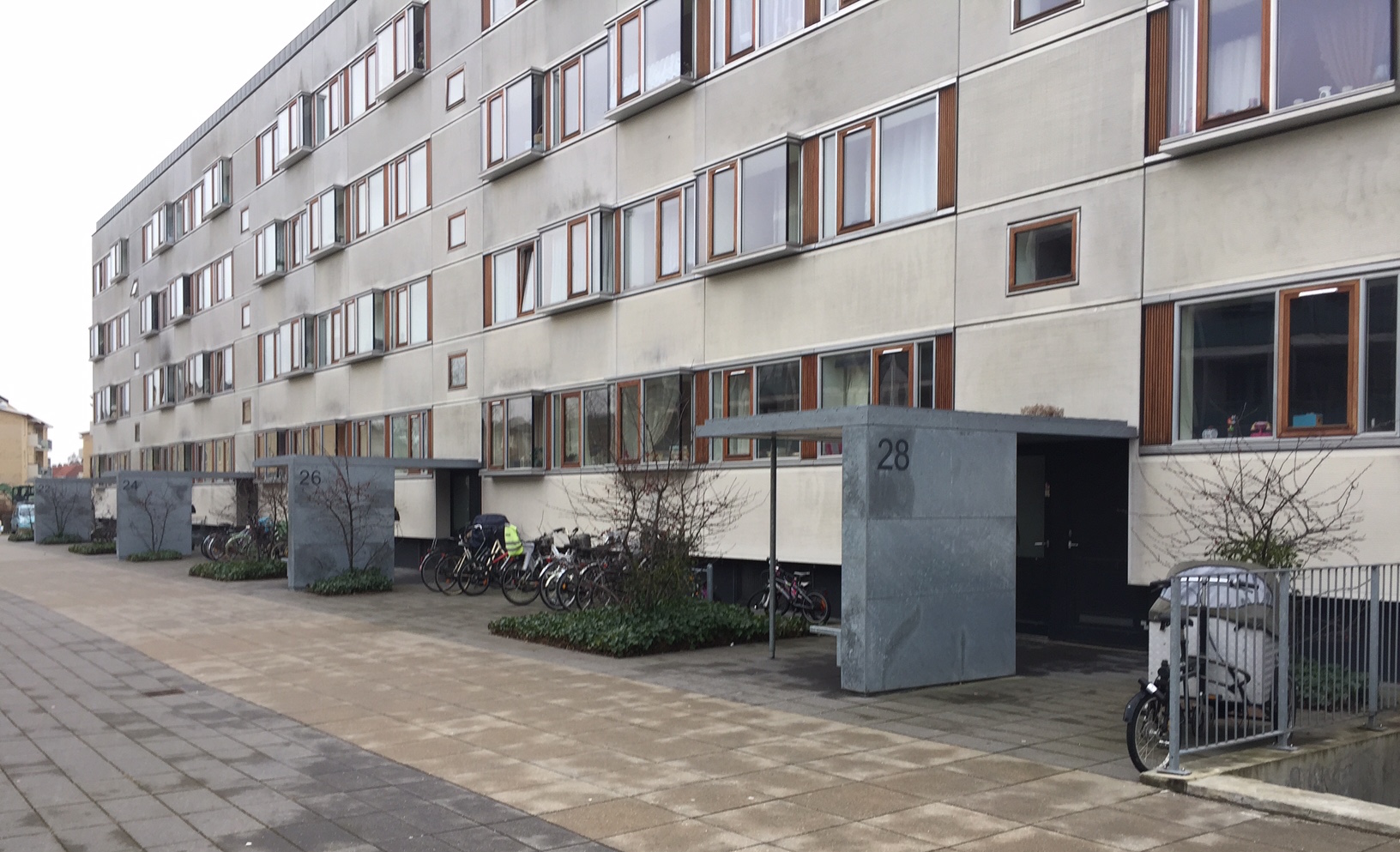
New wooden windows add character to the façade, and a new entrance with small benches gives space for residents to meet
Old pavilions were demolished creating space for a new retirement home, community space, and a kindergarten built to the highest green standards. The new facilities wind through the central green area, creating smaller more intimate outdoor spaces that have helped to increase the feeling of safety with more passive surveillance of the area.
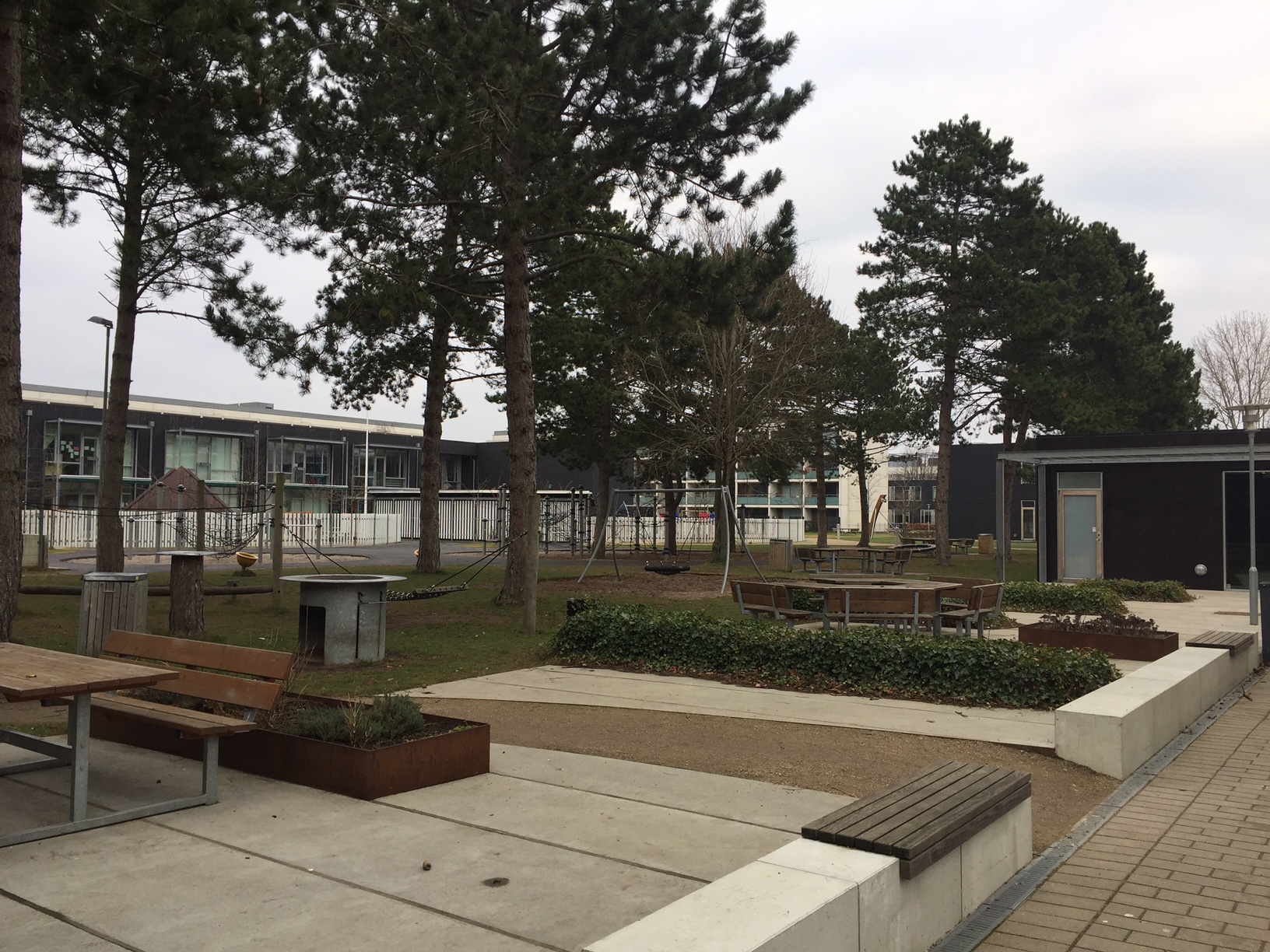
Communal pavilions and outdoor sitting areas
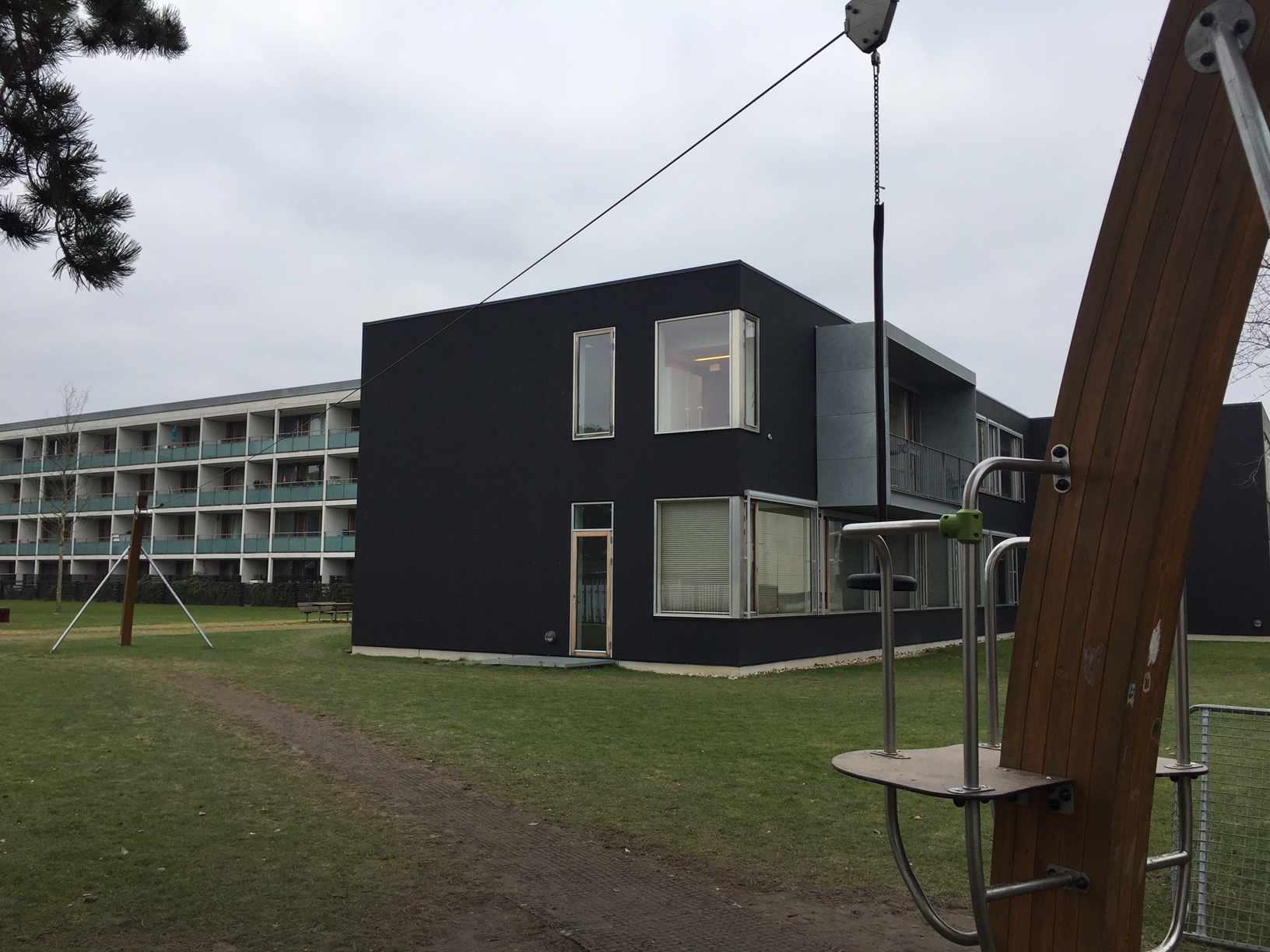
A zip-line creates a link between the areas on each side of the retirement home
Temporary play spaces built at the time of renovation have been permanantly integrated to the landscape, these are dotted across the shared outdoor spaces and in-between the houses. This has improved local social life as more people now use the outdoor spaces.
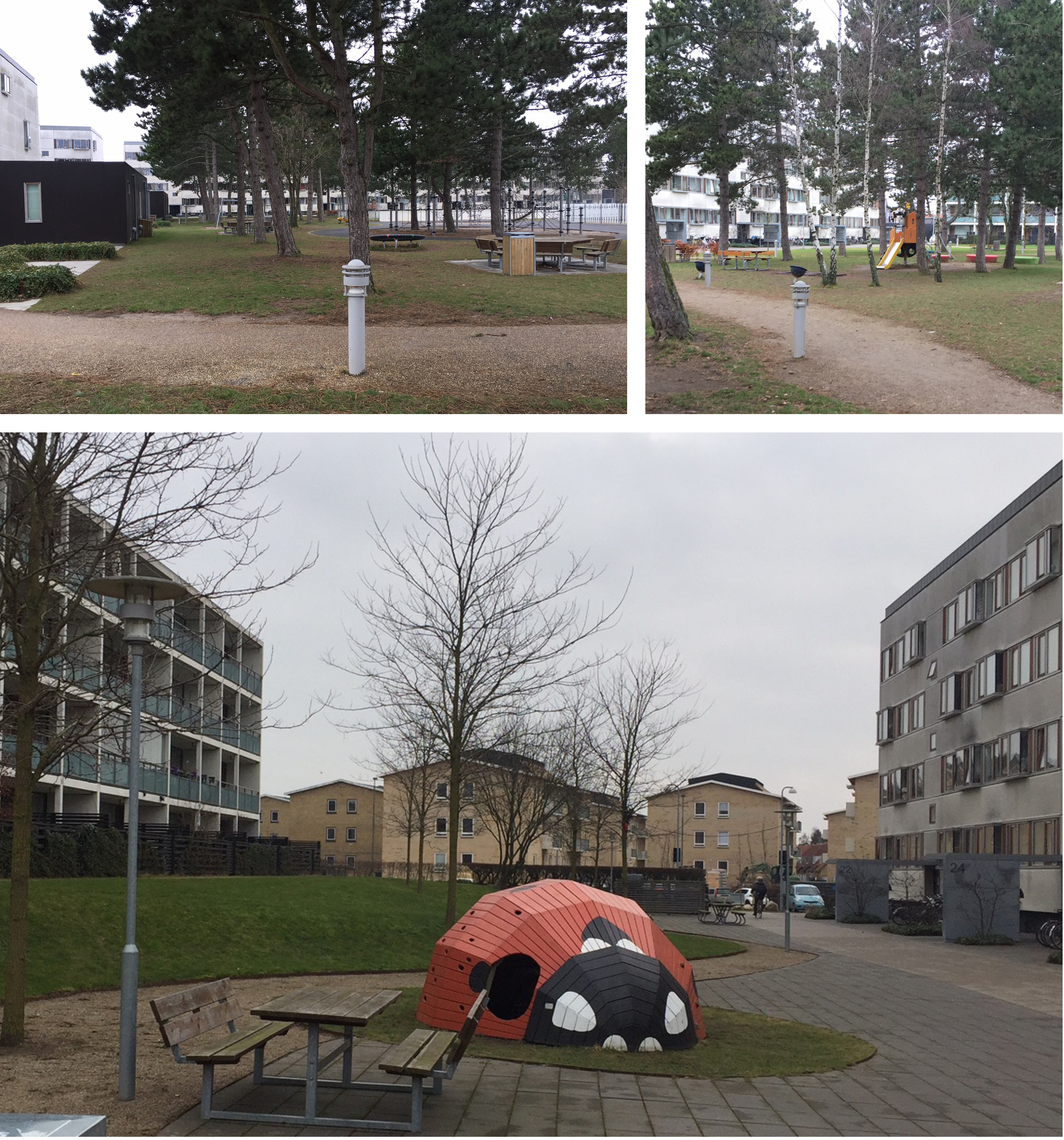
Locating the kindergarten in the centre and dotting play areas around the open areas has made Gyldenrisparken a destination for residents living in the surrounding neighbourhood. Natural walking routes and facilities brings more people into and through the estate. This has challenged misconceptions about the area and built connections between residents and the surrounding neighbourhoods. One of the most important outcomes of the renovation has been to give local residents something to be proud of and increase the sense of local ownership and belonging.
